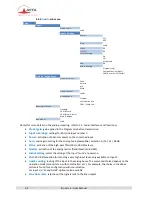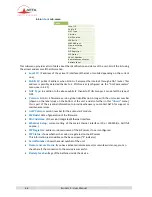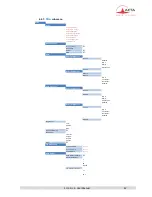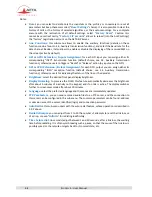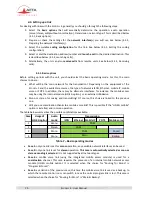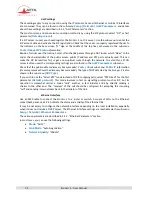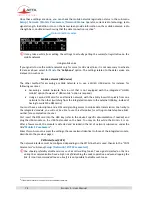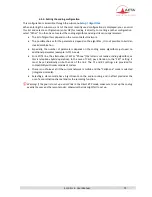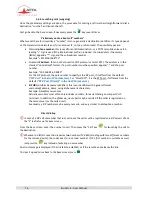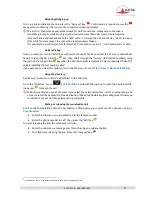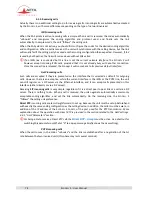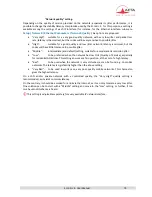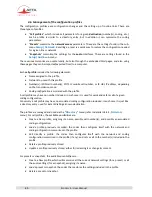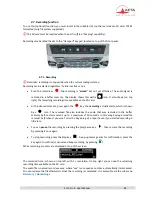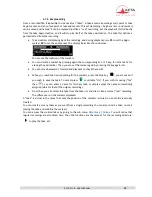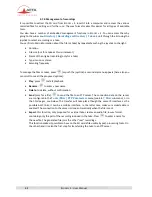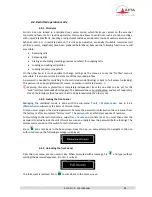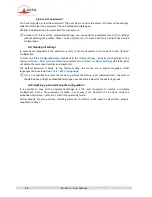
76
S
COOPY
+ S - User Manual
4.5.4.
Launching calls (outgoing)
Once the preliminary settings are done, the procedure for setting a call is rather straightforward: dial a
destination "number" and launch the call.
First go back to the base screen: if necessary press the
key several times.
Preliminary notice about call "numbers"
What we call here for simplicity a "number" is more generally a destination identifier. Its type depends
on the transmission network and, for audio over IP, on the protocol used. The possible types are:
Classical
phone number
: this is used for an ISDN destination, or a POTS or mobile voice call. A
leading "+" sign is used if the international prefix in included. If a sub-address if necessary
(ISDN), append a "*" sign and the sub-address number.
Example "+33141361268*12"
Numeric
IP address
: for an AoIP connection (SIP protocol or Direct RTP). The address is in the
classical "dot-decimal" format. If a port number must be specified, append ":" and the port
number.
Example: "192.168.24.65:5080"
For the SIP protocol, the port number to specify is the SIP port, if it differs from the default
("
SIP Port
" in the
AoIP Parameters
). For "Direct RTP", it is the RTP port, if different from the
default ("
RTP Port (Direct)
" in the
AoIP Parameters
).
SIP URI
(
Uniform Resource Identifier
): this is an identifier with a general format
username@domain_name
, using alphanumeric characters.
Example: [email protected]
Actually
username
most often only includes numbers, for easier dialing on compact VoIP
terminals. In addition, the
@domain_name
part may be omitted if the caller is registered on
the same server (as the called unit).
Eventually, a SIP number may be purely numeric, and very similar to a telephone number.
Direct dialing
In case of a SIP call, remember that in most cases the unit must be registered on a SIP server! Check
the "S" indicator on the base screen.
From the base screen, enter the number to call. Then press the "Call" key
for launching the call to
the destination.
Whenever an ISDN connection requires two numbers (128 kbit/s coding with two different numbers
for the remote device), the codec asks for a second number. If the first number is suitable as well,
just press the
key instead of entering a new number.
An error message is displayed if the link fails to establish, or if the remote end releases the link.
To clear it up and come back to the base screen, press
.
Содержание Scoopy+ S
Страница 1: ...Mono stereo portable audio codec for real time transmission over ISDN POTS MOBILE IP User Manual ...
Страница 2: ......
Страница 135: ......

